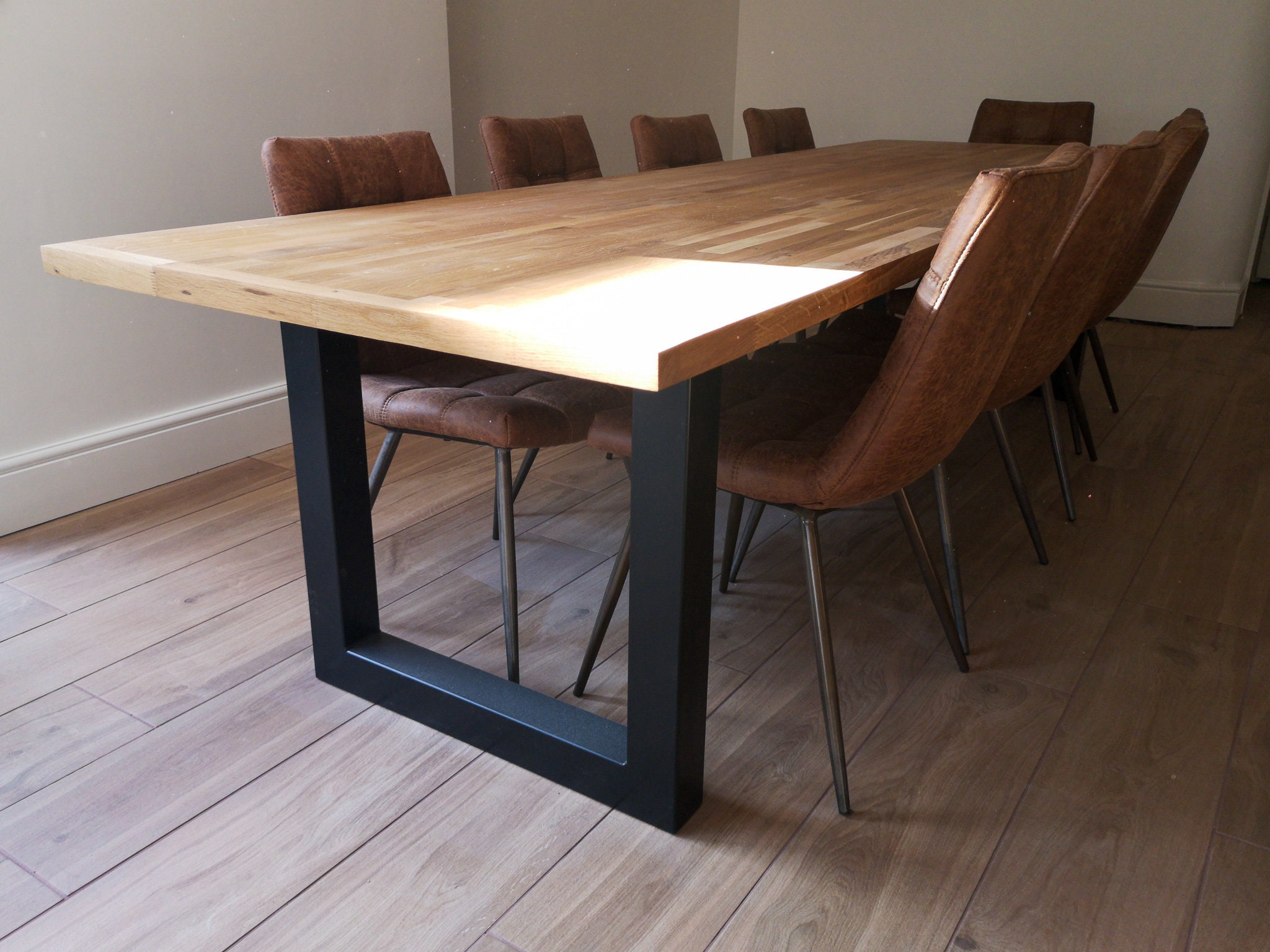Just how to Select the Perfect Dining Room Table Legs for Your Home Design
Just how to Select the Perfect Dining Room Table Legs for Your Home Design
Blog Article
Table Legs: How to Select the very best Styles for Your Room
Choosing the right eating table legs is essential for both aesthetic and practical consistency in your dining room. Whether your space flaunts a streamlined, modern-day vibe or leans towards an extra typical ambiance, the design of the legs can dramatically influence the overall appearance. Conical legs show contemporary elegance, while turned legs offer a nod to classic charm.
Evaluating Your Dining-room Style
Exactly how do you establish the most effective table legs for your area? The response begins with a detailed assessment of your eating space style. A cohesive design guarantees that your table legs improve the total aesthetic instead of clash with existing aspects. Start by observing the building features of your eating space. Exist popular features such as exposed beam of lights, elaborate moldings, or minimalist lines? These details usually determine whether a standard, rustic, modern, or industrial design is most ideal.
A dining room with sleek, modern-day chairs and metallic accents may benefit from basic, structured table legs. On the other hand, an area filled with vintage pieces and abundant fabrics might call for ornate, sculpted legs.
Illumination likewise influences perception. All-natural light can highlight certain products and finishes, while artificial lighting can highlight different aspects. Account for the area's range and percentages. Big, open dining-room can fit heavier, a lot more considerable legs, whereas smaller sized spaces require more delicate, unobtrusive layouts. By meticulously reviewing these factors, you can pick table legs that sympathetically blend with your dining room's style.
Popular Leg Styles Described

One widespread design is the conical leg, renowned for its sleek, modern-day look. Next off, the transformed leg features elaborate spindle-like styles, typically found in standard and farmhouse setups.
Cabriole legs, with their distinctive contours, are associated with French Provincial and Queen Anne furniture. Their stylish, streaming lines bring a sense of sophistication and historical appeal (dining room table legs). For those preferring a durable and uncomplicated style, square legs supply strong assistance and a tidy, geometric appearance, perfect for commercial or minimal areas
Lastly, barrette legs provide a retro, mid-century modern ambiance. Made from steel, these legs are both lightweight and solid, adding a distinct visual contrast to wood table tops. Understanding these designs will direct you in choosing dining table legs that enhance your room's visual and functionality.
Product Considerations

Steel legs, usually made from stainless steel, iron, or light weight aluminum, give a contemporary and commercial look while guaranteeing durable assistance. They are generally extra immune to wear and tear, making them a sturdy choice.

Various other products like bamboo or rattan use environmentally friendly options, bringing an all-natural and unwinded ambiance to the dining location. Each material has its advantages and disadvantages, and the ideal option will depend upon your details demands and preferences.
Harmonizing Aesthetics and Capability
Achieving the ideal equilibrium in between aesthetics and capability is vital when picking eating table legs. While the aesthetic charm of table legs can significantly enhance the general atmosphere of an eating space, their practical facets can not be overlooked. The design of the legs must integrate with the space's décor, yet they must additionally provide ample support and security for the table.
Think about the architectural layout of your space. Streamlined, modern interiors may take advantage of minimal, steel legs that provide a clean and unobtrusive appearance. On the other hand, conventional setups commonly complement transformed or carved wood legs that add a touch of beauty and refinement.
Capability incorporates the security and toughness of the legs. For instance, trestle legs, recognized for their toughness, can offer strong assistance for larger tables, making them optimal for families or regular artists. important source dining room table legs. Conversely, pedestal legs can supply more legroom and flexibility, enabling much better seats arrangements
Additionally, the height and positioning of the legs are critical for comfy dining. Legs positioned too much internal may restrain seats, while those as well near to the side can limit activity. Therefore, thoughtful consideration of both aesthetic and useful elements is extremely important for an optimal eating experience.
Modification and DIY Options
Personalization opens a realm of possibilities for producing table legs that are distinctly tailored to your taste and requirements. Whether you look for a traditional, modern, or eclectic look, customized choices allow you to select the precise materials, finishes, and makes that finest complement your area. Customizable choices variety from picking the sort of wood-- helpful site such as oak, maple, or walnut-- to selecting metal surfaces like brushed nickel or antique brass. Particular layout aspects, such as turned legs, tapered shapes, or complex makings, can be incorporated to show your design.
For those likely towards diy (DIY) tasks, developing customized table legs supplies both a rewarding experience and the possibility to achieve a bespoke aesthetic. Do it yourself fanatics can source basic materials and utilize woodworking or metalworking tools to craft legs that fulfill precise specs. In addition, countless on the internet tutorials and workshops supply guidance, making the procedure more accessible for newbies.
Eventually, whether choosing professional personalization or embarking on a DIY venture, the capacity to tailor eating table legs makes sure useful content that the last product integrates with your interior decoration vision, improving both functionality and visual allure.
Final Thought
Selecting the appropriate table legs needs mindful consideration of the general style of the eating area, consisting of existing building features and furniture. Understanding popular leg styles and material alternatives is vital for attaining an unified aesthetic. Balancing aesthetic appeals with performance makes sure stability and improves the eating experience. Modification options better enable a customized layout. Eventually, the selected table legs must complement the style, giving both visual allure and functional support.
Report this page